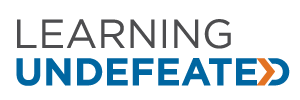from Constructech | read it >
Construction is no longer just a collection of manual tasks. For generations now, technology has been infiltrating the daily work experience in the building trades. Universities and colleges are developing high-tech programs for construction trades, blending computer and laser technology into the curriculum so the next generation of contractors and trades will start out thinking about using the various forms of tech that can improve their work and their results.
A growing emphasis on STEM (science, technology, engineering, and mathematics) has had a major impact on many industries, as these students move into the world of work. With this growth comes a need for improved and expanded facilities.
Following in the traditional approach to expanding classroom capacity, Saint Louis University has invested $78.8 million to enhance STEM facilities as it continues to see a surge in students pursuing science, engineering, math, and health science degrees. Currently under construction is a new $50 million Interdisciplinary Science and Engineering Building that will open in 2020. The 90,000-sq.ft. facility will feature innovative teaching spaces and flexible labs, an active learning classroom that can hold up to 210 students, and a research computing and data visualization support center. In addition, the university recently completed an extensive $28.8 million renovation of Macelwane Hall, which houses the biology programs and teaching labs for chemistry.
The university also is investing in career services, industry partnerships, and hands-on learning, as part of a renewed focus on student success. Fast becoming a leading hub for entrepreneurship and technology, St. Louis is in the midst of a renaissance fueled by $8 billion of investment, including $1 billion around SLU’s campus. Cortex, the region’s largest innovation district, is thriving, and the NGA (National Geospatial-Intelligence Agency) is building a new $1.7 billion western headquarters expected to bring thousands of new jobs to the region.
But the application of STEM programs has also become dependent on resources, some of which are not readily available to school districts struggling with revenue shortfalls. Building programs, especially, have been hard hit in many communities. In the fast growth era of the 1940s and 1950s, the answer was “temporary classrooms” in mobile and manufactured housing units. Some of those temporary buildings are still in use, 50 and more years later. Today, a new facility is being offered to low-income and distressed communities looking for ways to provide laboratory space for STEM students.
Learning Undefeated, a nonprofit, provides STEM opportunities for high needs communities with stocked laboratories housed in shipping containers. Its latest concept in mobile STEM education is the Drop Anywhere Lab. Learning Undefeated custom-designed these STEM spaces from shipping containers and will deploy the new labs to middle and high schools in Maryland and Texas beginning in the 2019-2020 school year.
Smaller, lighter, and less expensive than brick-and-mortar or trailer labs, Drop Anywhere Labs offer a blend of career and skills education. Each lab will support a variety of content themes, from science and health to engineering and construction, offering an immersive, hands-on learning environment that can serve up to four classes simultaneously.
The organization introduced the first mobile lab program for Maryland high school students in 2003. To date, these mobile labs have served more than 200,000 K-12 students—approximately 75% of those from low-income school districts—across 18 states.
In 2017, the Learning Undefeated team saw an opportunity to take its labs to South Texas to help Gulf coast schools that had been damaged or destroyed during Hurricane Harvey. The organization’s Texas initiatives have served more than 15,000 students from disaster-impacted communities in 27 schools across 12 school districts.
With the three new Drop Anywhere Labs, Learning Undefeated will be able to serve an additional 60,000 students per year.
And before you get upset that these shipping container labs are replacing construction, remember that in many of the communities where these will be deployed, without them there would be no access to lab equipment and learning space for these students, many of whom will go on to jobs in the tech areas that support construction—and even go into construction itself. That can be considered the paradox: even when the facility isn’t a building, construction can benefit from the learning that goes on inside.
Want to tweet about this article? Use hashtags #construction #IoT #infrastructure #AI #artificialintelligence #machinelearning #bigdata #digitaltransformation #cybersecurity #blockchain #futureofwork







